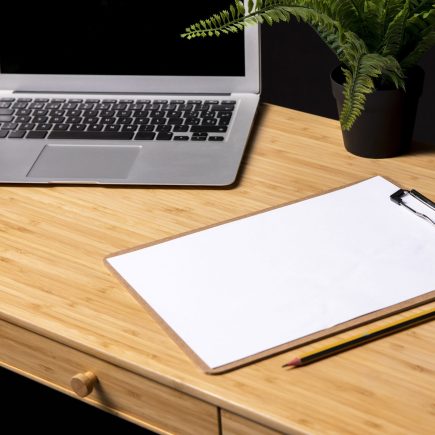Building a raised garden bed with concrete blocks is a simple and rewarding DIY project that gives you a sturdy, long-lasting foundation for growing your plants. Whether you’re a seasoned gardener or just starting, raised garden beds provide many benefits, from better drainage to easier access for planting and harvesting.
Why Build a Raised Garden Bed with Concrete Blocks?

Concrete blocks offer several advantages that make them ideal for raised garden beds. They are durable, affordable, and easy to assemble. Here’s why you should consider using concrete blocks for your garden bed:
- Durability: Concrete blocks can withstand harsh weather conditions and won’t rot, warp, or degrade like wood. They are built to last for decades, even in outdoor environments.
- Stability: The heavy nature of concrete blocks ensures that your garden bed will remain stable and solid, preventing any shifting or collapsing.
- Cost-Effective: Compared to other materials like treated wood or metal, concrete blocks are relatively inexpensive and widely available, making them a budget-friendly choice.
- Simple Construction: Unlike building with wood or metal, constructing a raised bed with concrete blocks is straightforward and requires only basic tools and skills.
- Better Drainage: Concrete blocks allow for better water drainage compared to traditional ground-level beds, which helps reduce the risk of root rot and other water-related plant diseases.
Gathering Materials and Tools

Before you get started, it’s important to gather all the necessary materials and tools for the project. Here’s a list of what you’ll need:
Materials:
- Concrete Blocks: The number of blocks you need will depend on the size and height of your raised garden bed. Standard concrete blocks are typically 16″ x 8″ x 8″, but you may need more if you plan to make a taller bed.
- Gravel: A few inches of gravel will help with drainage at the base of your raised bed, ensuring water doesn’t pool and suffocate the plant roots.
- Soil: A good soil mix is essential for your plants to thrive. You’ll want a blend of garden soil, compost, and perlite for proper drainage and nutrient retention.
- Rebar (Optional): If you’re building a taller raised bed, you may want to reinforce the blocks with rebar. This can prevent the blocks from shifting or toppling over.
- Construction Adhesive (Optional): You can apply construction adhesive between layers of blocks for added security, especially for taller beds or beds in areas with heavy rainfall or strong winds.
Tools:
- Shovel & Rake: These tools are essential for clearing and leveling the ground.
- Measuring Tape: To ensure the blocks are properly aligned and spaced.
- Level: To check that the blocks are aligned and even during the construction process.
- Rubber Mallet: To gently tap the blocks into place without damaging them.
- Gloves & Safety Glasses: Protect your hands and eyes while working with concrete.
Choosing the Right Location for Your Raised Bed

The location of your raised garden bed is just as important as the materials you use. Follow these guidelines to pick the perfect spot:
Sunlight
Most plants require 6-8 hours of direct sunlight each day. Choose a location that will give your plants the sunlight they need to grow strong and healthy. Make sure to take into account any potential shading from trees or buildings during different times of the day.
Accessibility
Your raised bed should be easy to access for planting, watering, and harvesting. Consider placing it near a water source to make watering your plants easier. If you’re using a hose, make sure it can easily reach the garden bed.
Level Ground
For the best results, select an area that is relatively flat. Uneven ground can cause your blocks to shift over time, making your bed unstable. If your garden area is sloped, you’ll need to spend some time leveling the ground to create a solid foundation for your raised bed.
Preparing the Ground

Once you’ve selected the perfect spot, it’s time to prepare the area. Here’s how to get the ground ready for your raised bed:
Clear the Area
Begin by removing any weeds, grass, rocks, or other debris from the area where your garden bed will be. Use a shovel to dig up any large weeds or roots, and a rake to level out the surface. A clean area ensures that your concrete blocks will sit flat and secure.
Level the Ground
Use a rake to smooth out any uneven areas in the soil. This will help create a stable base for the blocks. If the ground is very uneven, you may need to add some additional soil or gravel to level the area.
Lay a Gravel Base
To ensure good drainage, spread a layer of gravel across the bottom of the prepared area. A few inches of gravel will allow water to flow through the soil without pooling, which helps to prevent waterlogging and root rot.
Building the Base Layer of Concrete Blocks

Now it’s time to start building your raised garden bed! Here’s how to lay the first row of blocks:
Place the First Row of Blocks
Begin by laying down the first row of concrete blocks. Ensure that each block is level and aligned properly. Use a level to check that the blocks are straight both horizontally and vertically. A solid foundation is crucial for a long-lasting raised bed.
Tip: If you’re using cinder blocks, place them with the hollow sides facing up. This will help with water drainage and prevent water from accumulating in the bottom of the blocks.
Align the Blocks
Take your time to check the alignment of each block. Measure the distance between the blocks to make sure they are spaced evenly, and ensure that the first row is level. This will form the foundation for the rest of the raised bed, so it’s important to get it right.
Stacking Additional Layers
Once the first layer is in place, you can begin stacking the next layer of blocks. If you want a taller raised bed, continue adding more blocks on top of the first row.
Stagger the Joints
For added strength and stability, stagger the joints between the blocks in each layer. This means that the blocks in the second row should be offset from the blocks in the first row, creating a more solid structure.
Adding the Top Layer and Finishing the Bed

Add a Top Cap (Optional)
To give your raised bed a finished, professional look, you can add a top cap to the blocks. A top cap is typically made of concrete or wood and serves to cover the rough edges of the blocks. It also provides a nice finished appearance to your garden bed.
Seal the Blocks
Concrete blocks can absorb moisture, which can lead to cracking and erosion over time. To protect the blocks and extend the life of your raised bed, apply a concrete sealant. This will protect the blocks from the elements and ensure that they last for years.
Filling the Raised Bed with Soil
Now that your garden bed structure is in place, it’s time to fill it with soil and start planting.
Choose the Right Soil Mix
For optimal plant growth, choose a well-draining soil mix. A good mix includes garden soil, compost, and perlite. This ensures that your plants have enough nutrients while allowing excess water to drain properly.
Fill the Bed with Soil
Carefully fill your raised bed with the soil mix, leaving a couple of inches from the top of the blocks. This prevents water from spilling over and ensures that your soil doesn’t wash away during watering.
Ongoing Maintenance
Once your raised garden bed is complete, it’s important to maintain it properly for continued plant health:
- Water Regularly: Raised beds tend to dry out faster than traditional garden beds, so make sure to water your plants regularly. Consider installing a soaker hose or drip irrigation system to make watering more efficient.
- Replenish Soil: Over time, the soil in your raised bed may settle. Add fresh soil each season to maintain the depth and nutrient content of your bed.
- Weed Control: While raised beds help reduce weed growth, you’ll still need to monitor the bed for weeds. Consider using landscape fabric underneath the soil to prevent weed growth from below.
FAQs
How do I prevent the blocks from shifting over time?
To prevent the blocks from shifting, ensure that the first layer is properly leveled and aligned. For taller beds, consider reinforcing the structure with rebar to prevent movement. Additionally, applying construction adhesive between layers can provide extra stability, especially in areas with heavy rainfall or winds.
What should I do if the ground is uneven for my garden bed?
If your ground is uneven, start by using a rake to smooth out the soil. For larger uneven areas, add soil or gravel to level the base. A flat foundation is essential to ensure the stability of the concrete blocks and prevent them from shifting over time.
How can I protect my concrete blocks from weather damage?
To protect your concrete blocks from weather damage, apply a concrete sealant to the surface. This will protect the blocks from moisture absorption, cracking, and erosion over time. A sealant will also help extend the life of your raised garden bed, ensuring it remains in good condition for years.






















